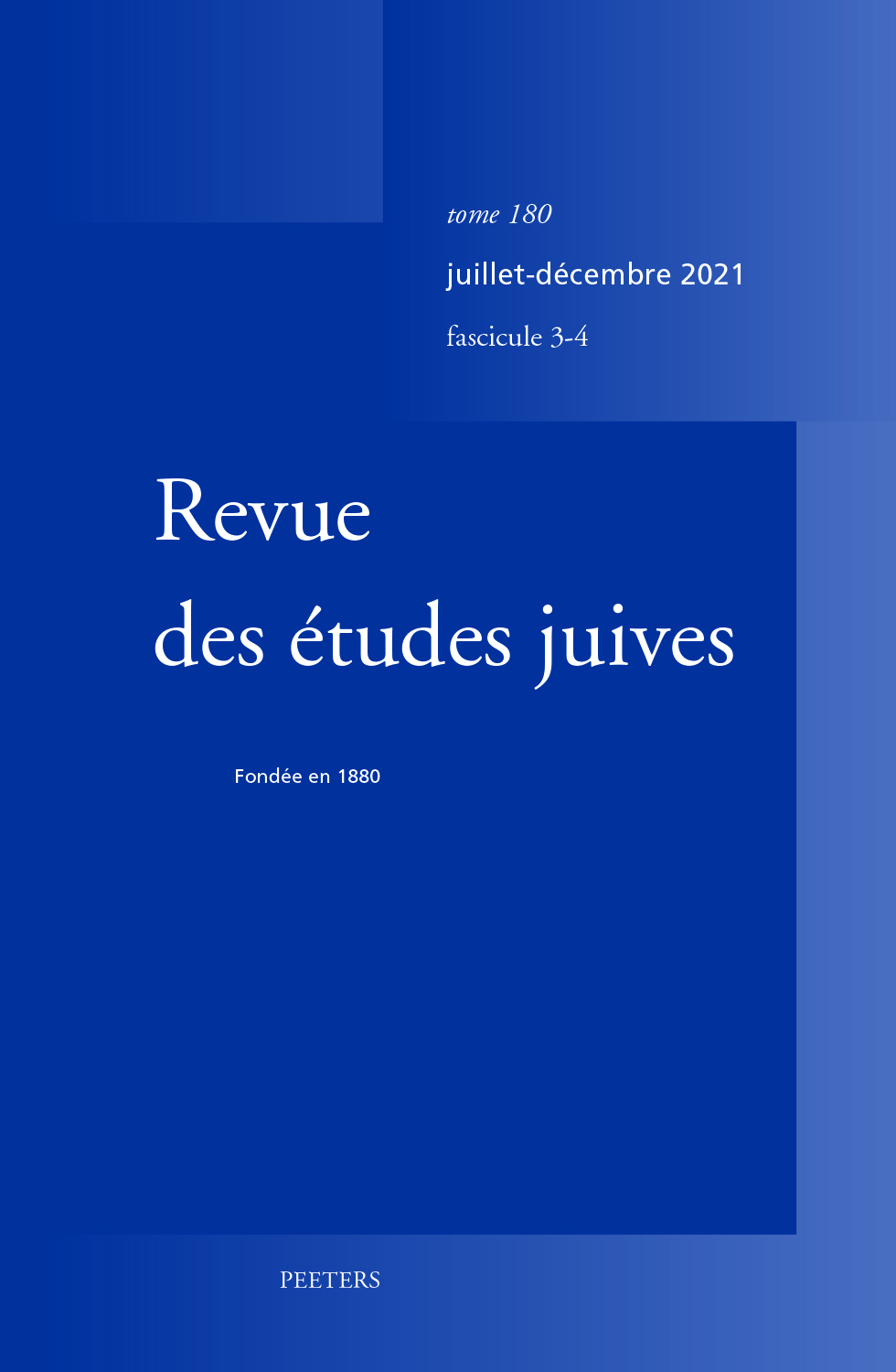 previous article in this issue previous article in this issue | next article in this issue  |

|
Document Details : Title: Les traductions en hébreu de l'œuvre de Gérard de Solo (XIVe siècle) Author(s): GUÉNOUN, Anne-Sylvie Journal: Revue des Études Juives Volume: 164 Issue: 3-4 Date: juillet-décembre 2005 Pages: 463-488 DOI: 10.2143/REJ.164.3.2003832 Abstract : Présentation et détail de la tradition manuscrite des traductions hébraïques de trois ouvrages médicaux de Gérard de Solo (fl. 1335-1344). Il s’agit du Libellus de febribus, traduit par Abraham Avigdor (1351-1402), et du Commentaire au livre IX de l’Almansor de Rhazès, objet de trois traductions: celles d’Abraham Avigdor, de Léon Joseph de Carcassonne (1365-v. 1418) et, récemment découverte, de Tobie b. Samuel de Leiria (fl. 1388), ainsi que de l'Introductorium iuuenum, traduit par Léon Joseph de Carrassonne. La tradition manuscrite de ces textes est importante: une cinquantaine de témoins, à comparer à la centaine de manuscrits latins connus. On observe une répartition dans le temps et dans l’espace qui diffère de celle des textes latins: copiés jusqu’au XVIe, voire au XVIIIe siècle, les textes hébreux l’ont été en Languedoc, Provence, Espagne et Italie, alors que les textes latins étaient particulièrement diffusés dans l’Empire. This articles introduces and lists the manuscript copies of the Hebrew translations of works by the physician Gérard de Solo (fl. 1335-1344). They are the Libellus de febribus, translated by Abraham Avigdor (1351-1402); the Commentary to book IX of Rhazes’ Almansor of which exist three translations: one by Abraham Avigdor, another one by Leon Joseph of Carcassonne (1365-1418 ca.), and a third one, newly discovered, by Tobiel b. Samuel of Leiria (fl. 1388 ca); finally, the Introductorium iuuenum, translated by Leon Joseph of Carcassonne. The extant copies are numerous: some fifty items, to compare with a hundred of Latin manuscripts. They do not belong exactly to the same time and places as their Latin counterparts: the Hebrew texts were copied until the XVIth and even the XVIIIth century, in an area spreading from Languedoc and Provence to Spain and Italy, whereas the Latin texts were mostly copied in the Empire. |
|
